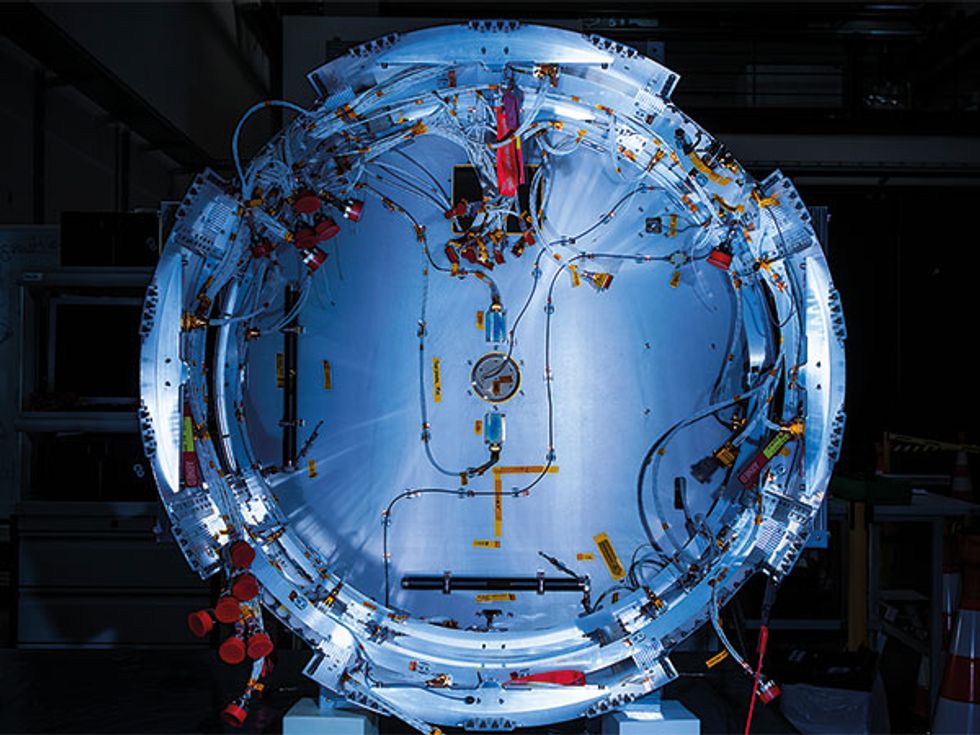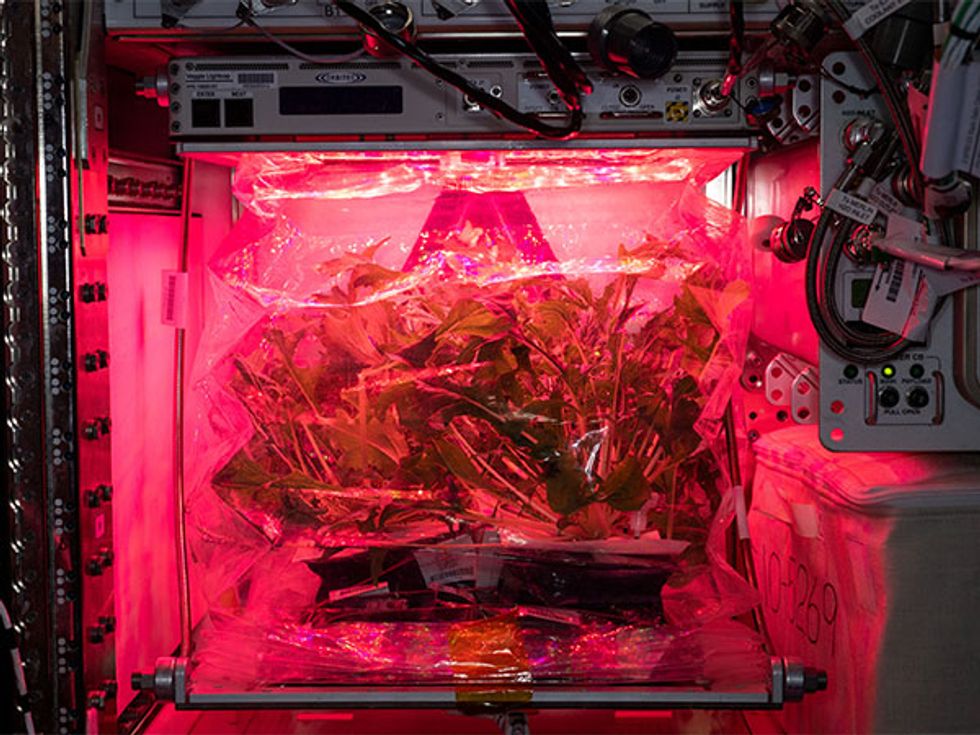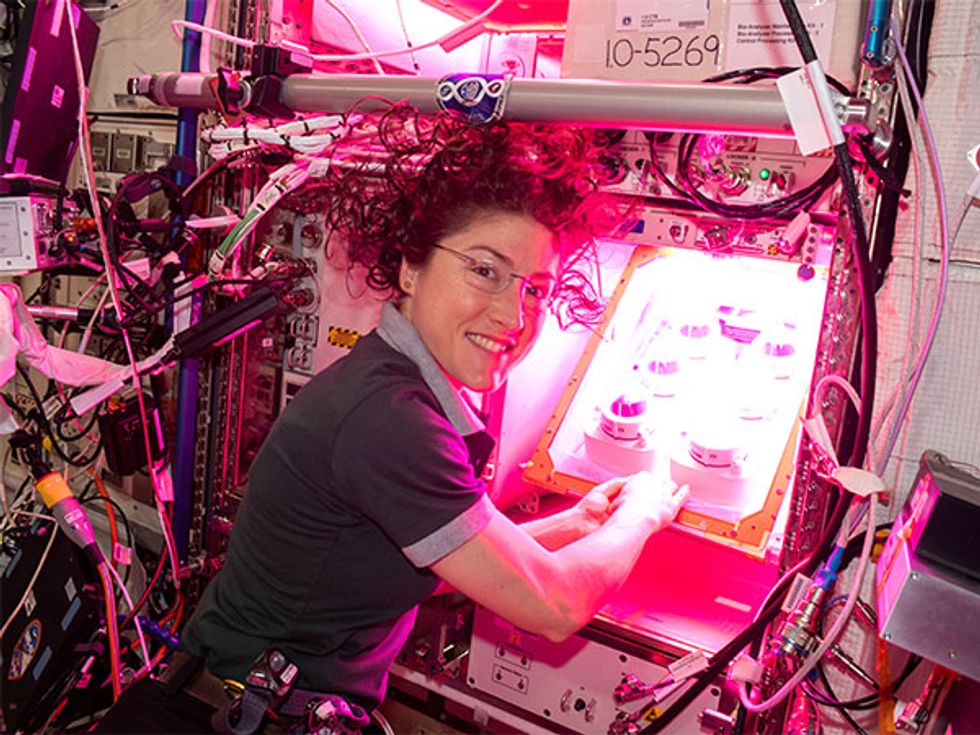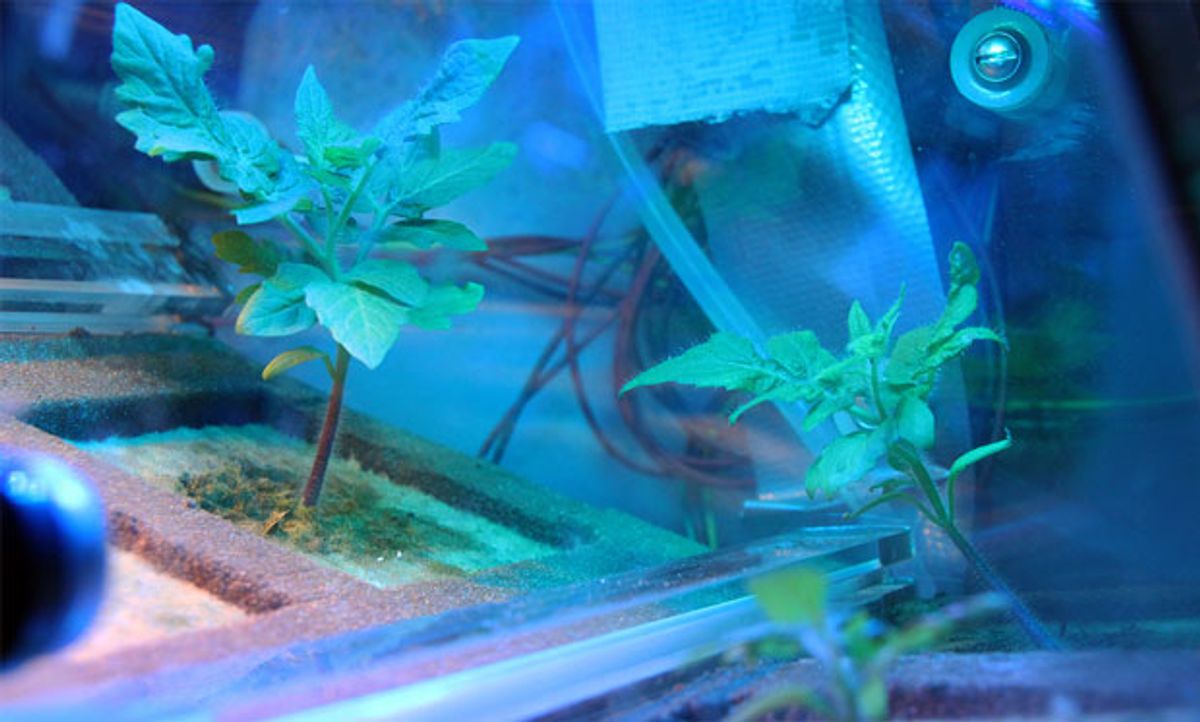It’s hard enough to grow tomatoes from seeds out in a sunny garden patch. To do it in sun-synchronous orbit—that is to say, in outer space—would seem that much harder. But is it?
That’s what plant biologists and aerospace engineers in Cologne and Bremen, Germany, are set to find out. Researchers are preparing in the next couple of weeks to send a software upload to a satellite orbiting at 575 kilometers (357 miles) above Earth. Onboard the satellite are two small greenhouses, each one bearing six tiny tomato seeds and a gardener’s measure of hope. The upload is going to tell these seeds to go ahead and try to sprout.
The experiment aims to not only grow tomatoes in space but to examine the workings of combined biological life-support systems under specific gravitational conditions, namely, those on the moon and on Mars. Eu:CROPIS, which is the name of the satellite as well as the orbital tomato-growing program, is right now spinning at a rate that generates a force equal to that of gravity on the surface of the moon.
The environment is designed to work as a closed loop: The idea is to employ algae, lava filters, plants, and recycled human urine to create the cycle by which plants absorb nitrates and produce oxygen. Being able to accomplish all these tasks will be crucial to any long-term stay in space, be it on a moon base or a year-long flight to Mars. Any humans along for that kind of ride will be glad to get away from tinned applesauce and surely welcome fresh greens or, say, a tomato.
The German space agency DLR greenlighted Eu:CROPIS seven years ago as part of its compact satellite development program, says Hartmut Müller, a systems engineer and, until recently, project manager for Eu:CROPIS (he’s since moved on to new projects). The completed Eu:CROPIS launched nearly a year ago on top of a SpaceX rocket from Vandenberg AFB in California.

The satellite itself is about the size and shape of an overlarge oil drum. There are four experiments in total onboard Eu:CROPIS. There are the two tomato greenhouses: one to simulate the moon, the other for Mars. The lunar experiment happens first; then the satellite will change its rotation speed for the Mars trial.
Alongside the greenhouses, each the size of a large breadbox, is a small NASA experiment called PowerCell, which is a bacteria colony fed by photosynthetic microbes; the setup is examining cell transformation and protein production in bacteria naturally found in the gut and soil. There is also an experiment measuring long-term exposure to cosmic radiation.
Plant physiologist and Eu:CROPIS primary investigator Jens Hauslage is busying himself these days managing the pending software upload for the greenhouses, which he says will control the valves, pumps, heater, and lighting for irrigation and growth of the tomato plants. Before last year’s launch, the DLR sent him out into a pasture to explain on camera that when cows pee in the field, they are introducing ammonia to bacteria in the soil, which is converted to the nitrates, which feed plants. This nitrogen cycle, properly balanced, is fundamental to life.
The DLR looks to replicate this process in the little orbiting greenhouses in the spinning satellite, and to do so with tomatoes, which are complex flowering fruits, in a closed-loop system. The experiment is meant to work quite simply—or as simply as any biological process can be in space.
When the software tells the greenhouse valves to open, a precious and small amount of water will dampen a substrate under the tomato seeds. The water rinses algae known as Euglena gracilis, which can grow into a photosynthetically active culture. The algae supplies oxygen into a trickle filter, which is made from porous lava rock. The filter is meant to convert urine/urea into nitrate. In this case, a synthetic urine will be used, simulating the human urine from a long-term space residency.
The system introduces urine into the filter, which converts it to nitrate until the photosynthetic oxygen production kicks in from the (hopefully, growing) tomatoes. This is the beneficial cycle by which plants ultimately absorb the nitrates they need: The algae prefer ammonia over nitrate, and so should protect the seedlings from potentially toxic ammonia levels, filtering the synthetic urine and putting this waste material to use as a nitrogen source for the plants.

Space farming has a robust history, and, experts say, a demanding future.
Soviet cosmonauts grew the first plants in space in 1982 onboard the Salyut 7, nurturing a member of the mustard family. Three-plus decades on, NASA astronauts aboard the International Space Station (ISS) are set, in November, to grow spicy Espanola chili peppers, says Raymond Wheeler, a longtime NASA plant physiologist at the Kennedy Space Center, in Florida. The peppers would be the first edible fruit grown in space by U.S. astronauts, though joint U.S.-Russian efforts have been successful in raising greens, soybeans, and wheat. Pepper plants were launched into a two-day orbit onboard a U.S. satellite in 1967, but they were pregrown and are a whole other story.
It took a long time to get even there. Raising flowering plants, like tomatoes or strawberries, is more complicated than greens. Gary Stutte, a horticulturalist and space agriculture consultant—and a former NASA colleague of Wheeler’s who was principal investigator on four spaceflight experiments—worked for years during the ’90s on an ingenious earthbound program called The Breadboard Project. Researchers developed a 156-cubic-meter test bed which had a 20-square-meter area to grow plants in the simulated environment of a space colony.
Stutte says there’s much left to figure out, including how plants respond to partial gravity and how best to use new LED technologies to manage and optimize the 400- to 700-spectra wavelengths best suited for space-borne plant photosynthesis. “These different colors of light change the way the plant grows and decide whether pigments are produced, whether it’s purple or green, whether the stem is tall or short, whether the leaves are upright or not,” Stutte says.

Gioia Massa, who works on the Veggie plant growth system for the ISS, says research into spectra for space plants has flowered in recent years to the point where horticulturists talk about “light recipes” for custom growth spectra and managing quality, intensity, and duration for different kinds of plants. Indeed, Eu:CROPIS will use the LEDs in the little greenhouses to try to boost the tomato seeds’ chances of success.
The vacuum of space is the harshest imaginable place for living things—the ongoing earthbound large-scale test bed for space farming, EDEN [PDF], operates out of a German station in Antarctica. Massa makes the point that it would be a pretty sad experience for a space traveler to have a plant failure on, say, day 70, and have to resort to warming up packs of processed food while they begin to plant all over again.
By learning more about plants, NASA hopes to advance long-duration space exploration, first to the moon and eventually to Mars. “We really need to learn a lot,” Massa says. “The behavior of water and gas flow changes so much in microgravity, and fluid physics is one of the most important things to test. We’re still trying to figure out the best way to water plants in space.”
They’ll want to sort that out before we get to our moon base.
This post was updated on 25 September 2019.
Michael Dumiak is a Berlin-based writer and reporter covering science and culture and a longtime contributor to IEEE Spectrum. For Spectrum, he has covered digital models of ailing hearts in Belgrade, reported on technology from Minsk and shale energy from the Estonian-Russian border, explored cryonics in Saarland, and followed the controversial phaseout of incandescent lightbulbs in Berlin. He is author and editor of Woods and the Sea: Estonian Design and the Virtual Frontier.



